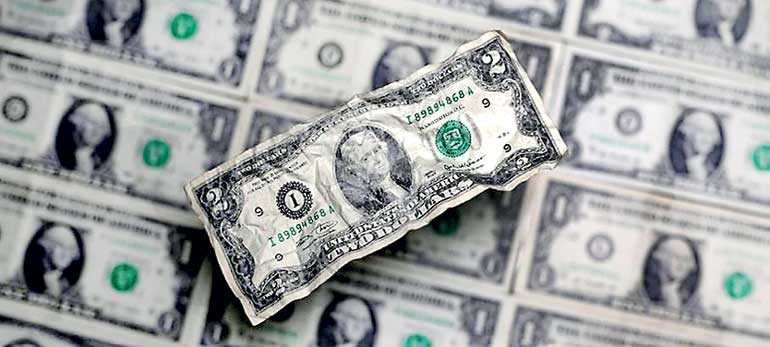Sunday Feb 23, 2025
Sunday Feb 23, 2025
Tuesday, 30 April 2019 00:00 - - {{hitsCtrl.values.hits}}

LONDON (REUTERS): A rally in the dollar faltered on Monday with strong US data doing little to lift the currency or convince investors that a slowdown in activity is over.
The greenback traded in a narrow range as Japan kicked off a week of holidays, typically a period of thin liquidity that can prompt spikes in volatility.
A Federal Reserve policy meeting, Brexit negotiations and a raft of global data including on US core inflation and payrolls could each be the trigger for big currency swings this week.
All eyes are on the Fed to see what its policymakers made of a first-quarter gross domestic product report that showed strong growth of 3.2%, but largely for one-off reasons including a surge in inventories.
“This is not the week during which we would be looking to put on large positions in FX in an attempt to profit from the market implications of one or more economic events,” said Stephen Gallo, European head of FX strategy at BMO Capital Markets in London.
“Nevertheless, our overwhelming bias with high conviction remains buying the USD on dips vs most of the rest of the G10 space.” The aggregate dollar long position climbed to $33.6 billion on Monday, its highest level since December 2015, according to Scotiabank’s weekly CFTC sentiment report. The euro remains the largest held net short.
Against a basket of currencies, the dollar was a fraction softer at 97.970, having eased from a near two-year peak of 98.330.
The dollar fell back on Friday despite the upbeat GDP report because core inflation slowed sharply, leading speculators to narrow the odds on a rate cut this year.
Most other major central banks have also turned dovish in recent months, keeping their currencies subdued.
The Canadian dollar and Swedish crown, for instance, both took hits last week when their central banks put a halt on future rate hikes.
The European Central Bank is under pressure to keep its stimulus in place, if not to do a new round, while markets are pricing in rate cuts for Australia and New Zealand following weak inflation readings.
Some fear the lack of liquidity could lead to a re-run of the dollar’s flash crash from January when the yen made massive gains in a matter of minutes as bears were forced to cover short positions.
The euro was a shade firmer at $1.1157, but still not far from a near two-year trough of $1.1110. The euro has been broadly pushing lower since early January.
A swathe of manufacturing surveys from Europe and China are due later this week, along with a first reading on EU GDP. The US payrolls report on Friday is forecast to show a solid increase of 180,000 in April, with unemployment at 3.8%.
Discover Kapruka, the leading online shopping platform in Sri Lanka, where you can conveniently send Gifts and Flowers to your loved ones for any event including Valentine ’s Day. Explore a wide range of popular Shopping Categories on Kapruka, including Toys, Groceries, Electronics, Birthday Cakes, Fruits, Chocolates, Flower Bouquets, Clothing, Watches, Lingerie, Gift Sets and Jewellery. Also if you’re interested in selling with Kapruka, Partner Central by Kapruka is the best solution to start with. Moreover, through Kapruka Global Shop, you can also enjoy the convenience of purchasing products from renowned platforms like Amazon and eBay and have them delivered to Sri Lanka.
Discover Kapruka, the leading online shopping platform in Sri Lanka, where you can conveniently send Gifts and Flowers to your loved ones for any event including Valentine ’s Day. Explore a wide range of popular Shopping Categories on Kapruka, including Toys, Groceries, Electronics, Birthday Cakes, Fruits, Chocolates, Flower Bouquets, Clothing, Watches, Lingerie, Gift Sets and Jewellery. Also if you’re interested in selling with Kapruka, Partner Central by Kapruka is the best solution to start with. Moreover, through Kapruka Global Shop, you can also enjoy the convenience of purchasing products from renowned platforms like Amazon and eBay and have them delivered to Sri Lanka.